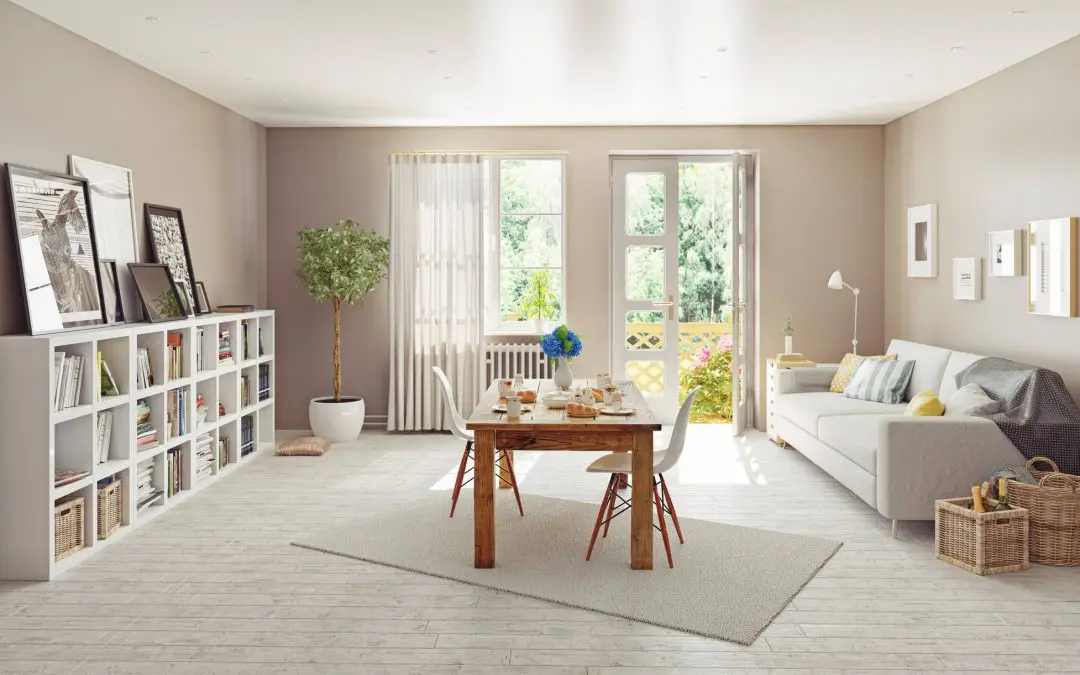Staging your home is one of the most effective strategies for making it stand out in the real estate market. A well-staged home highlights its best features and helps potential buyers envision themselves living there. These are our top tips for staging your home to look its best and sell quickly in a competitive market.
1. Declutter and Clean When Staging Your Home
Before you even think about arranging furniture or adding decor, start by decluttering and deep cleaning every corner of your home. This process involves removing personal items, excess furniture, and anything that might distract potential buyers. Clean surfaces thoroughly and ensure every room is spotless. A clean, clutter-free environment lets buyers focus on the home’s features rather than your belongings.
2. Neutralize and Depersonalize
Neutralizing your home involves creating a blank canvas that appeals to a wide audience. Repaint walls in neutral colors like beige, gray, or off-white, making spaces look larger and more inviting. Remove personal photos and memorabilia to help buyers imagine their lives in the space. A neutral palette and minimal personal touches create an environment where buyers can easily visualize their own style and belongings.
3. Optimize Furniture Arrangement
Arranging furniture thoughtfully is crucial for showcasing your home’s layout. Aim to create clear pathways and ensure that each room is functional. Arrange furniture to highlight the room’s purpose and create a sense of balance. For example, in a living room, position the sofa to face the focal point, such as a fireplace or window, and ensure there’s ample space for movement.
4. Enhance Curb Appeal When Staging Your Home
The first impression starts outside your home, so enhancing curb appeal is critical. Maintain the lawn, trim shrubs, and add fresh mulch to flower beds. A well-maintained exterior sets the tone for the interior and attracts potential buyers. Simple touches like a fresh coat of paint on the front door, new house numbers, or potted plants can make a big difference.
5. Illuminate Your Home
Good lighting can transform a space, making it look warmer and more inviting. Ensure that each room is well-lit with a mix of natural and artificial light. Open curtains and blinds to let in natural light, and use lamps or overhead lights to brighten up darker areas. Well-lit spaces create a welcoming atmosphere and can make rooms feel larger.
6. Accessorize Wisely When Staging Your Home
Accessorizing is about adding the right touches to enhance your home’s appeal without overwhelming it. Use throw pillows, rugs, and artwork to add color and texture, but keep it minimal and tasteful. Accessories should complement the home’s style and contribute to a cohesive look. Choose items that add warmth and interest while keeping the space open and inviting.
7. Create a Cozy Atmosphere
A cozy atmosphere can make a home feel more inviting. Add elements like fresh towels in the bathroom, a bowl of fruit in the kitchen, or a neatly set dining table. Small touches that make the home feel lived-in and cared for can create a positive emotional response from buyers. Freshly baked cookies can also add to the warm, welcoming vibe.
8. Highlight Key Features When Staging Your Home
Showcase the standout features of your home, such as a beautiful fireplace, built-in shelving, or a spacious kitchen. Arrange furniture and decor in a way that draws attention to these features and ensures they are easily visible. You can make your home more memorable to potential buyers by emphasizing what makes it unique.
9. Consider Professional Help
If staging feels overwhelming or if you want to ensure your home is presented in the best possible light, consider hiring a professional stager. A professional will offer expert advice, provide stylish furnishings, and adhere to current market trends.
FAQs
Why is staging important for selling a home?
Staging helps buyers visualize themselves in the home, highlights the property’s best features, and can make the house more attractive compared to others on the market. It often leads to quicker sales and can sometimes even increase the sale price.
How much does professional staging cost?
The cost of professional staging can vary widely depending on the size of the home and the extent of staging required. It typically ranges from a few hundred to a few thousand dollars. The investment can be worthwhile if it leads to a faster sale or a higher selling price.
Can I stage my home myself?
Yes, many homeowners successfully stage their own homes. By following basic staging principles like decluttering, neutralizing decor, and arranging furniture thoughtfully, you can create a welcoming environment that appeals to buyers.
How long does it take to stage a home?
The time required for staging depends on the size of the home and the amount of work needed. Completing the staging process can take a few days to a couple of weeks. Planning ahead and starting early can help ensure everything is ready in time for showings.
Anderson Home Inspections provides home inspection services to customers in Central Ohio. Contact us to schedule an appointment.

